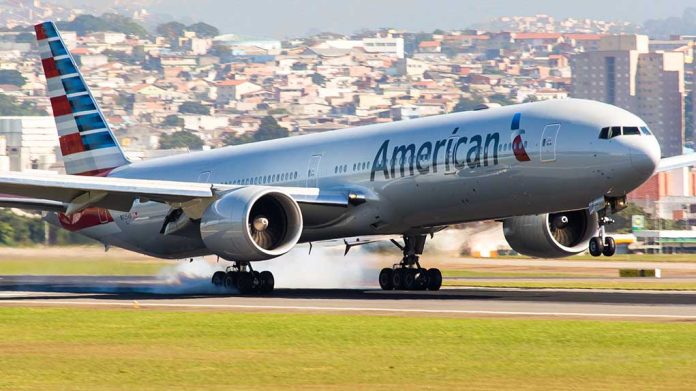
A retired New York City firefighter’s drunken antics force an American Airlines flight to make an unscheduled landing in Alaska, highlighting the ongoing issue of disruptive passengers in air travel.
At a Glance
- Robert Solesky, a retired NYC firefighter, caused a major disturbance on a flight to Japan due to intoxication
- The incident forced the pilot to divert the flight to Anchorage, Alaska, 3,500 miles from its destination
- Solesky’s blood alcohol level was 0.219, indicating severe intoxication
- The FAA reported 2,102 complaints of unruly passengers in 2024
- Solesky was released on his own recognizance and is due back in court on February 10
Chaos in the Skies: Retired Firefighter’s Drunken Rampage
American Airlines flight 167 from JFK to Tokyo became the latest victim of passenger misconduct when Robert William Solesky, a retired New York City firefighter, unleashed chaos in the air. The incident, which forced an emergency landing in Anchorage, Alaska, serves as a stark reminder of the ongoing challenges airlines face with intoxicated and unruly passengers.
Solesky’s disruptive behavior began when he struggled to operate the lavatory door, creating a commotion that was heard even in the cockpit. As the situation escalated, he became aggressive, grabbing a flight attendant and attempting to access the cockpit, despite repeated instructions to remain seated and calm down.
A Family Affair Gone Wrong
Attempts by Solesky’s wife and cousins to manage his behavior proved futile. The gravity of the situation was underscored when his wife admitted to the flight crew that she felt incapable of controlling her husband, even with family assistance. This admission highlighted the helplessness felt by both passengers and crew in the face of such disruptive conduct.
The severity of Solesky’s intoxication became apparent when tests revealed his blood alcohol level to be 0.219, nearly three times the legal driving limit. In his inebriated state, Solesky admitted to consuming a Bloody Mary and two bottles of liquor before the incident, a dangerous cocktail that led to his reckless behavior.
The Cost of Disruption
The captain’s decision to divert the flight to Anchorage, a staggering 3,500 miles from its intended destination, underscores the significant impact such incidents can have on airline operations. This unscheduled landing not only inconvenienced passengers but also incurred substantial costs for the airline.
Upon landing in Anchorage, Solesky was promptly arrested by airport police. He has since been released on his own recognizance and is scheduled to appear in court on February 10. The incident has drawn attention to the ongoing issue of passenger misconduct in air travel, with the Federal Aviation Administration (FAA) reporting 2,102 complaints of unruly passengers in 2024 alone.
A Growing Concern for Aviation Safety
While American Airlines has not commented on this specific case, the aviation industry continues to grapple with the challenge of maintaining safety and order in the skies and serves as a sobering reminder of the potential dangers posed by intoxicated passengers.
Sources:
Drunk firefighter causes chaos in first class — forcing pilot to make emergency landing, police say
Drunk firefighter causes chaos in first class — forcing pilot to make emergency landing, police say
Drunk firefighter causes chaos in first class — forcing pilot to make emergency landing, police say



